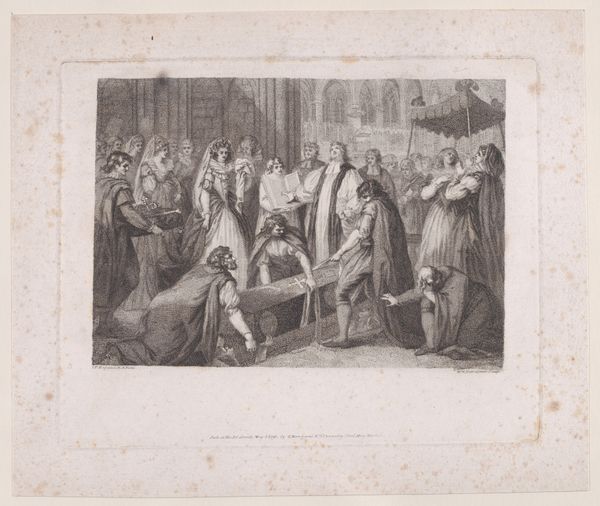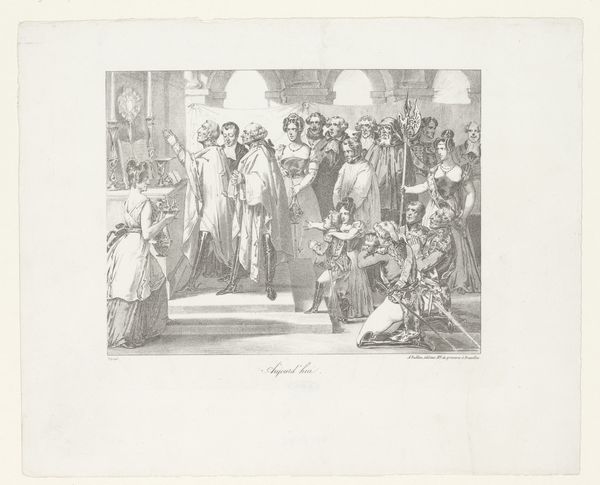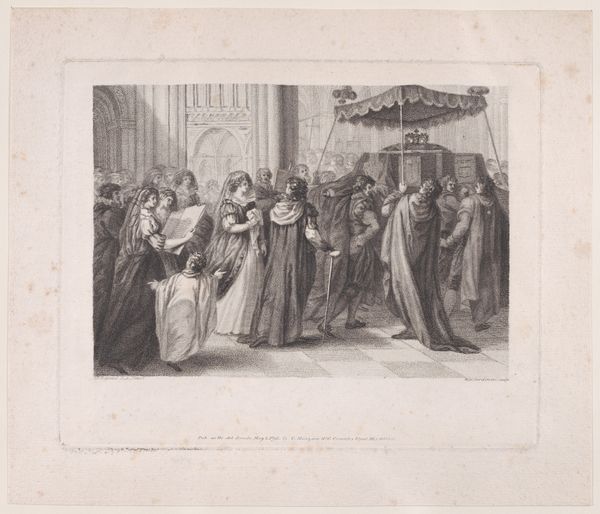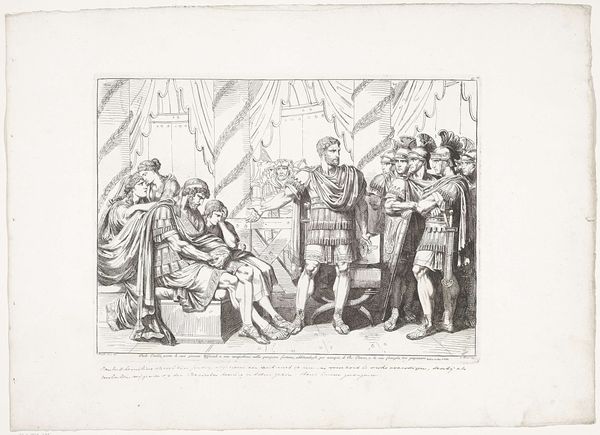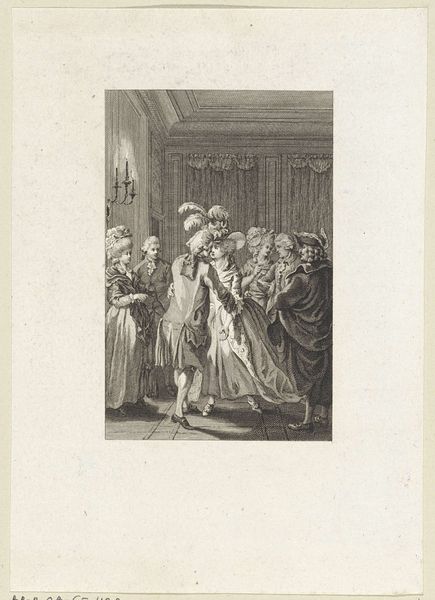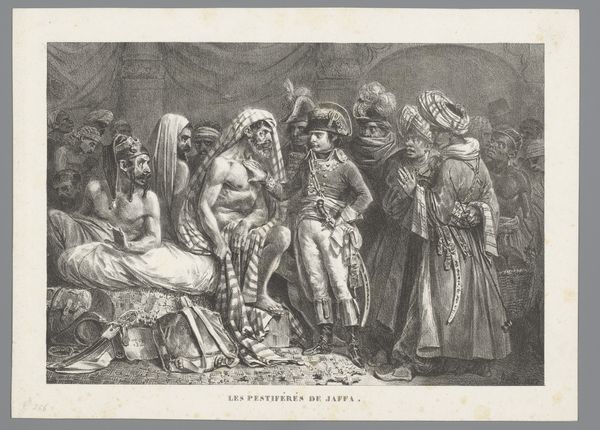
print, engraving
#
portrait
#
dutch-golden-age
# print
#
group-portraits
#
genre-painting
#
history-painting
#
engraving
Dimensions: height 188 mm, width 292 mm
Copyright: Rijks Museum: Open Domain
Editor: This is “Edelvrouwen, ca. 1600”, an engraving made between 1857 and 1864 by David van der Kellen, currently residing in the Rijksmuseum. The detailed costumes and architecture really grab my attention, giving off a formal, staged kind of mood. What symbolic elements are at play in this scene, would you say? Curator: What a fabulous observation about the formality! The clothes immediately mark status. Do you notice how everyone is arranged? It's almost theatrical, wouldn't you agree? I am also drawn to the animal figure on the staircase. In heraldry, specific animals had significance; for instance, a fox symbolized cunning or wisdom. That animal placed on a staircase in the lower left of the image implies, perhaps, someone who might want to ascend. Editor: Ah, so it might be subtly hinting at ambition or social maneuvering! Is there something to say about how most characters avert their gaze to somewhere outside the image? Curator: Exactly! Notice the absence of direct eye contact with the viewer. Everyone's involved in their own world, reinforcing their aristocratic status. Do you suppose the gazes follow a storyline of some kind? Is the child being introduced to these elegant women, as an appeal for better social standing for his mother? Consider the gazes as subtle emotional and narrative indicators. The engraver prompts us to ponder unwritten stories here. Editor: That's insightful. So, beyond just a record, engravings like this served to communicate certain values or narratives of ambition and social hierarchy. Curator: Precisely. The artist is also a storyteller. Look beyond the surface; try to decode the embedded cultural messages. Editor: Thank you; this exploration of symbolism truly opened up a richer understanding of the work for me. I’m curious to learn more!
Comments
No comments
Be the first to comment and join the conversation on the ultimate creative platform.
